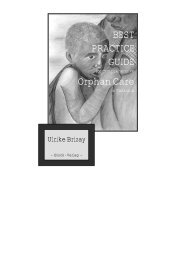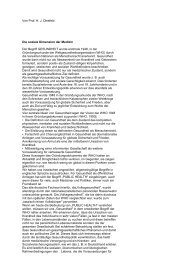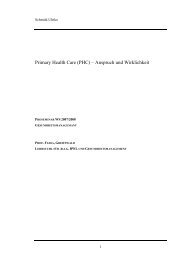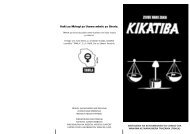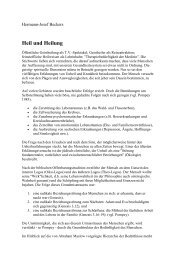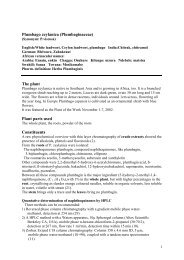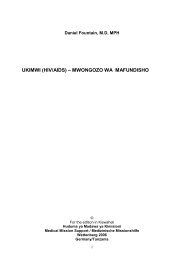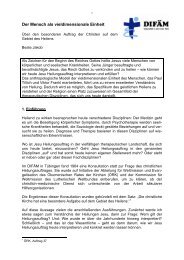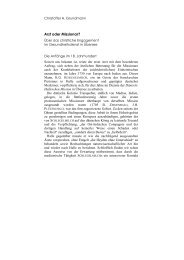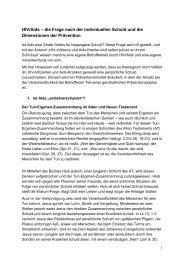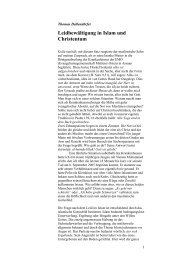(PHCII) - MMH/MMS
(PHCII) - MMH/MMS
(PHCII) - MMH/MMS
You also want an ePaper? Increase the reach of your titles
YUMPU automatically turns print PDFs into web optimized ePapers that Google loves.
HEALTH EDUCATION MODEL<br />
5.3.THEORETICAL PERSPECTIVE ON HEALTH EDUCATION INPUTS<br />
REGARDING TO LOW HEALTH UNIT DELIVERIES IN KIGOMA<br />
DISTRICT.<br />
INTRODUCTION:<br />
Health education model is a guide or idea that can be used for explaining or teaching<br />
health education on health and/or health related problems. It consists of several health<br />
models that can be applied to a single health intervention depending on the problem to be<br />
dealt with.<br />
Commonly used models are:-<br />
- Health belief model (HBM)<br />
- The theory of Reasoned Action (TRA)<br />
- Beliefs, Attitude, subjective norms and enabling factors (BASNEF)<br />
- Health Action Model (HAM)<br />
- Communication of Innovation theory (CIT)<br />
HEALTH BELIEF MODEL.<br />
It highlights the role of beliefs in stimulating preventive health education. Unlike other<br />
models it provides a useful checklist for choosing the point to emphasize in any<br />
communication message especially the importance of perceived serious, susceptibility<br />
and preventability. (Hubley 1993).<br />
THE THEORY OF REASONED ACTION.<br />
The Theory of Reasoned Action (TRA) influences significant others on individuals<br />
intention to act. In this model Fishben and Ajzen improve an aspect of TRA analysis of<br />
health making by separating belief from attitudes (Fishben and Ajzen 1985). Though it<br />
compliments and involves aspect of health decision making by separating belief from<br />
attitude, it emphasizes the paramount importance of the influence of significant others on<br />
the individuals intention to act.<br />
29



